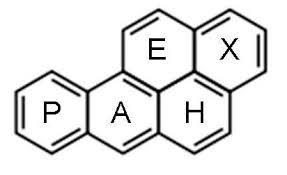EXPAH
Financed by: European Commission (LIFE Program)
Period: 01/10/2010 – 31/12/2013


Introduction
Polycyclic Aromatic Hydrocarbons (PAHs), present in atmospheric fine powders, are substances known for their carcinogenic and mutagenic properties.
Produced from the incomplete combustion of organic material (sources: road traffic, thermal and industrial plants, incinerators, power plants), PAHs are suspected of contributing to environmental toxicity.
Description
The main activity of the project consists in evaluating the actual exposure of the population to carcinogenic polycyclic aromatic hydrocarbons (PAHs) by measuring the concentrations observed in ambient air.
For this purpose, a dedicated procedure will be developed, based on the sampling of low-flow suspended powders (≤ 6L / min) on inert membranes, using samplers equipped with selectors for fine powders (PM2.5) and on chemical characterization by CGC-MSD.
The study domain is the urban area of Rome.
The suspended dust will be collected in outdoor and indoor environments, usually frequented by groups of the population more sensitive to the effects of pathogenic substances (children, elderly): schools, homes, public and private means of transport); personal samplings will be carried out and auxiliary measurements will be carried out at three stations of the Environmental Monitoring Network of the Lazio Region. The collection of meteo-climatic data, the study of the emission factors of PAH from the various anthropogenic sources and the measurement of vehicular traffic currents will allow to estimate the extent of exposure to PAH and any quantitative and "pattern" differences compared to the data obtained from the control units.
The examination of the epidemiological data will allow to highlight and estimate the net health effect of PAHs. To this end, to minimize evaluation errors due to the presence of interferents, at the same time as the PAHs, particulate and gaseous toxic pollutants will be measured (PM, heavy metals, inorganic salts, benzene hydrocarbons).
The experimental activity will be carried out in successive phases:
- Development of the preliminary monitoring and analysis procedure;
- Preliminary measurement campaign (on a small scale);
- Regular summer campaign;
- Regular winter campaign.
Auxiliary measures will concern the dimensional distribution of PAHs in indoor and outdoor environments and monitoring in the public transport network, as well as the penetration capacity of PAHs from the external to the internal environment.
Aims
- An inventory of IPA emissions in the Rome area;
- A dataset of indoor outdoor PM2.5 concentrations and PAH content and personal exposure;
- PM2.5 and IPA exposure maps for the city of Rome;
- Evaluation database of the health effects produced by PM2.5 and PAH.
Participants
- ASL RME
- INAIL (ex-ISPESL)
- CNR-IIA
- CNR-ISAC
- ARPA Lazio
- ARINET
- National Institute for Health and Welfare (Helsinki) - FINLAND
Angel Cecinato
CNR-IIA Leader
